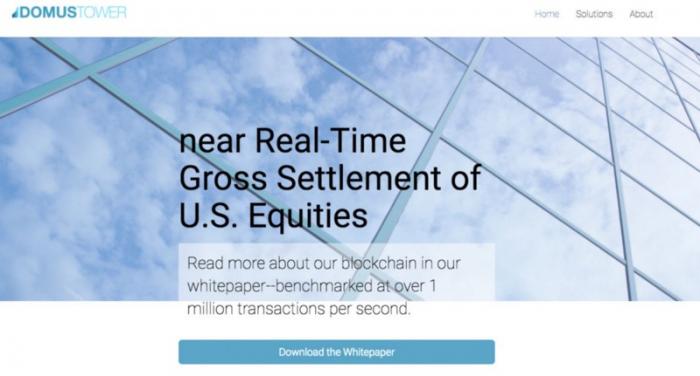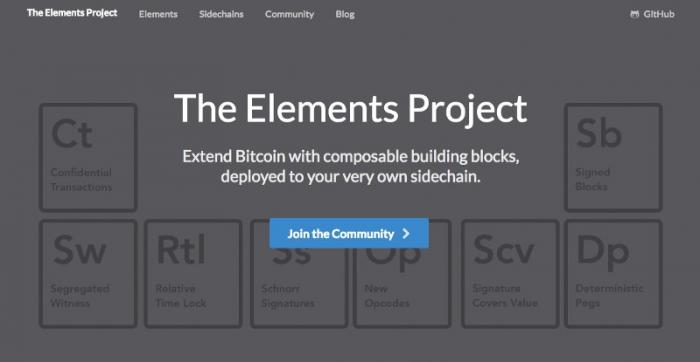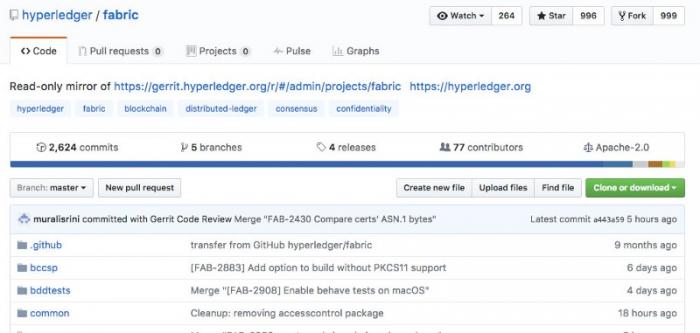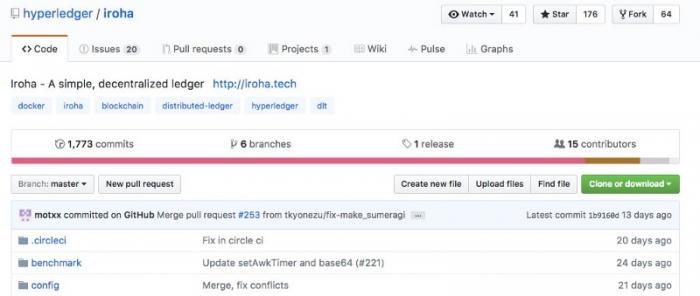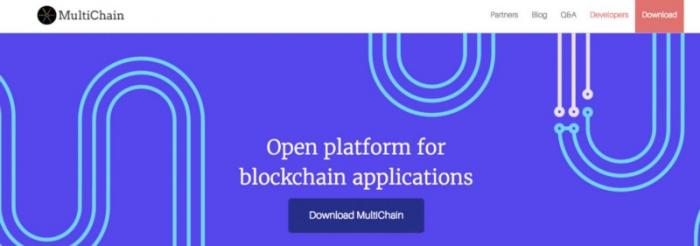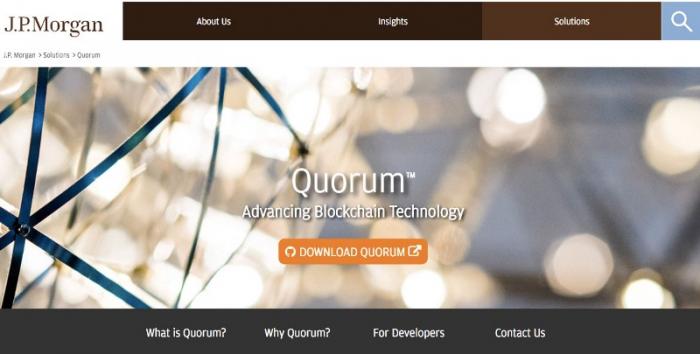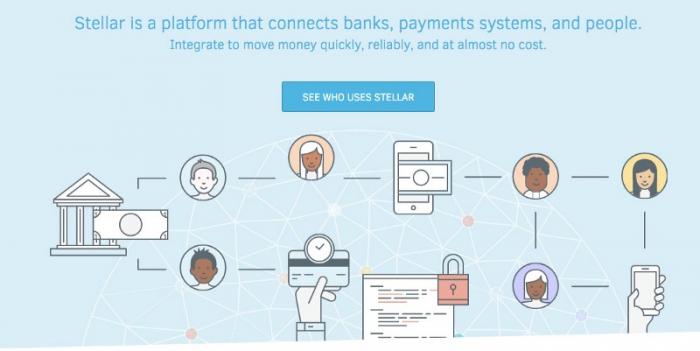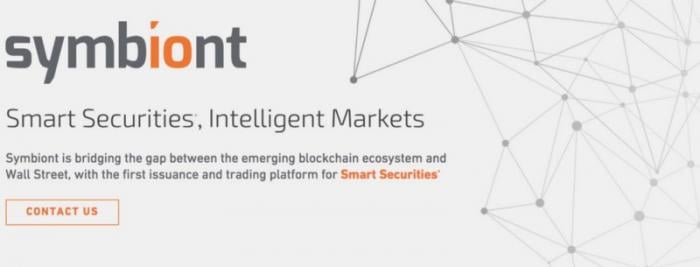17 blockchain platforms — a brief introduction
Blockchain technology was announced through the paper titled “Bitcoin: A Peer-to-Peer Electronic Cash System” by Satoshi Nakamoto in 2008. Interestingly, this paper does not specifically use the word “blockchain.”
Blockchain technology was announced through the paper titled “Bitcoin: A Peer-to-Peer Electronic Cash System” by Satoshi Nakamoto in 2008. Interestingly, this paper does not specifically use the word “blockchain.”
This paper talks about a “purely peer-to-peer version of electronic cash” where “the network timestamps transactions by hashing them into an ongoing chain of hash-based proof-of-work, forming a record that cannot be changed without redoing the proof-of- work.”
The open source Blockchain Security Controls (PT-BSC) defines a blockchain as a peer-to-peer network which timestamps records by hashing them into an ongoing chain of hash-based proof-of-work, forming a record that cannot be changed without redoing the proof-of-work. A blockchain can be permissioned, permission-less or hybrid.
On the other hand, a distributed ledger is defined as a peer-to-peer network, which uses a defined consensus mechanism to prevent modification of an ordered series of time-stamped records. Consensus mechanisms include Proof of stake, Federated Byzantine Agreement etc.
The more popular blockchain / distributed ledger systems in alphabetical order are:
- BigChainDB, an open source system that “starts with a big data distributed database and then adds blockchain characteristics — decentralized control, immutability and the transfer of digital assets.”
- Chain Core, a blockchain platform for issuing and transferring financial assets on a permissioned blockchain infrastructure.
- Corda, a distributed ledger platform with pluggable consensus.
- Credits, a development framework for building permissioned distributed ledgers.
- Domus Tower Blockchain, designed for regulated environments, benchmarked at ingesting over 1 million transactions per second.
- Elements Blockchain Platform, an open source, protocol-level technology for extending the functionality of Bitcoin.
- Eris:db, an open source, protocol-level technology for extending the functionality of Bitcoin.
- Ethereum, a decentralized platform that runs smart contracts on a custom built blockchain.
- HydraChain, an Ethereum extension for creating Permissioned Distributed Ledgers for private and consortium chains.
- Hyperledger Fabric, which supports the use of one or more networks, each managing different Assets, Agreements and Transactions between different sets of Member nodes.
- Hyperledger Iroha, a “simple and modularized” distributed ledger system with emphasis on mobile application development.
- Hyperledger Sawtooth Lake, a modular blockchain suite in which transaction business logic is decoupled from the consensus layer.
- Multichain, an open-source blockchain platform, based on bitcoin’s blockchain, for multi-asset financial transactions.
- Openchain, an open source distributed ledger system for issuing and managing digital assets.
- Quorum, an open source distributed ledger and smart contract platform based on Ethereum.
- **Stellar,**an open-source, distributed payments infrastructure that provides RESTful HTTP API servers which connect to Stellar Core, the backbone of the Stellar network.
- Symbiont Assembly, a distributed ledger inspired by Apache Kafka.
**Note:**In this article, the terms blockchain and distributed ledger systems are used inter-changeably.
1. BigchainDB
BigchainDB is an open source system that “starts with a big data distributed database and then adds blockchain characteristics — decentralized control, immutability and the transfer of digital assets.”
BigchainDB seeks to attain performance of 1 million writes per second throughput, storing petabytes of data, and sub-second latency.
BigchainDB key features include:
- Each write is recorded on the blockchain database without the need for Merkle Trees or sidechains.
- Support for custom assets, transactions, permissions and transparency.
- Federation Consensus Model (federation of voting nodes).
- Supports public and private networks.
- Has no native currency — any asset, token or currency can be issued.
- Set permissions at transaction level.
- It is open source.
Consensus mechanism: Federation of nodes with voting permissions
Useful links:
2. Chain Core
Chain Core is a blockchain platform for issuing and transferring financial assets on a permissioned blockchain infrastructure. Chain Core runs on the open-source Chain Protocol.
Chain Core Developer Edition is free while the Chain Core Enterprise Edition is a commercial product.
The creation, control and transfer of assets are decentralised among participants on Chain blockchain networks. The operation of the network is governed by a federation — a designated set of entities. The assets on Chain blockchain networks include currencies, securities, derivatives, gift cards, and loyalty points.
Chain core key features include:
- Native digital assets — currencies, securities etc.
- Role-based permissions for operating, accessing, and participating in a network.
- Support for multi-signature accounts.
- Federated consensus.
- Support for smart contracts.
- Transaction privacy.
Consensus mechanism: Federated consensus
Useful links:
3. Corda
Corda is an open-source distributed ledger platform with pluggable consensus — “it supports multiple consensus providers employing different algorithms on the same network.”
Corda is probably the only distributed ledger platform with pluggable consensus.
Corda’s key features include:
- No global broadcasting of data across the network.
- Pluggable consensus.
- Querying with SQL, join to external databases, bulk imports.
**Consensus mechanism:**Pluggable consensus
Useful links:
4. Credits
Credits is a development framework for building permissioned distributed ledgers.
**Consensus mechanism:**Credits uses a variant of Proof of Stake (a leaderless two-phase commit algorithm with variable voting power).
Useful links:
5. Domus Tower Blockchain
Domus Tower Blockchain is an interesting solution that has been designed for regulated environments such as securities trading where participants know each other and can independently decide whom to trust.
According to its whitepaper, Domus Tower Blockchain has been “benchmarked at ingesting over 1 million transactions per second on hardware costing less than $50 per hour on Amazon’s Web Services with the potential to scale to greater than 10 million transactions per second.”
Data storage is contained in a Merkle directional acyclic graph (MerkleDAG) and nodes on this graph are referred to as “blocks.” The data transmitted to the blockchain is digitally signed and verified before it is written to a block.
Domus Tower Blockchain’s key features include:
- Creation of linked blockchains where the assets of an account on one blockchain must match the liabilities on the account of another blockchain.
- Capability of recording a high rate of transactions in a scalable manner.
- Recording of double-entry balance sheet that tracks credits and debits.
**Consensus mechanism:**Any agent that has write access to a blockchain has 100% authority to write transactions to that chain. Authority is centralized under this model.
Useful links:
6. Elements Blockchain Platform
Elements is an open source, protocol-level technology for extending the functionality of Bitcoin.
Elements’ key features include:
- Confidential Assets — issue multiple assets who’s identifiers and amounts are blinded yet auditable.
- Confidential Transactions — keep the amounts transferred visible only to participants in the transaction and to designated entities.
- Additional opcodes — these include previously disabled opcodes (including string concatenation and substrings, integer shifts, and several bitwise operations), new DETERMINISTICRANDOM operation (which produces a random number within a range from a seed) and new CHECKSIGFROMSTACK operation (which verifies a signature against a message on the stack, rather than the spending transaction itself).
- Deterministic Pegs — which allow cross-chain transactions to be constructed in a decentralized fashion and tokens to be moved from one blockchain to another.
- Signed Blocks — this allows blocks can be cryptographically signed, thereby allowing the creator of the block to verify their identity in the future.
- Segregated Witness. Bitcoin transactions contain two things i.e. information about the effect on the ledger and data proving that the transaction is authorized. Using witness segregation, transaction IDs are redefined to only depend on the effect information and blocks commit separately to the witness data. This eliminates all known forms of transaction malleability.
- Relative Lock Time which allows a transaction to be time-locked.
Useful links:
7. Eris:db
Eris-db is a permissioned distributed ledger client that executes Ethereum smart contracts on a permissioned virtual machine.
Eris’ key features include:
- Multiple interfaces
- Ethereum Virtual Machine
- Permissioned systems
**Consensus mechanism:**Byzantine fault-tolerant Tendermint consensus engine, which is a deposit based proof of stake protocol.
Useful links:
8. Ethereum
Ethereum is a decentralized platform that runs smart contracts on a custom built blockchain.
Ethereum’s key features include:
- Ethereum Wallet — which facilitates holding crypto-assets as well as writing, deploying and using smart contracts.
- Creation of crypto-currencies
- Creation of democratic autonomous organizations (DAOs)
- Command line tools built in Go, C++, Python, Java etc.
Consensus mechanism: Ethash, a proof of work algorithm
Useful links:
9. Hydrachain
HydraChain is an Ethereum extension for creating Permissioned Distributed Ledgers for private and consortium chains.
HydraChain’s key features include:
- Full Compatibility with the Ethereum Protocol
- Accountable Validators
- Instant finality of blocks and no forks or reverts.
- Support for sub-second block times.
- New blocks are only created in the presence of pending transactions.
- Infrastructure for developing smart contracts in Python.
- Customizability of transaction fees, gas limits, genesis allocation, block time etc.
- Open Source
**Consensus mechanism:**Byzantine fault tolerant consensus protocol
Useful links:
10. Hyperledger Fabric
Hyperledger Fabric supports the use of one or more networks, each managing different Assets, Agreements and Transactions between different sets of Member nodes.
Hyperledger Fabric’s key features include:
- Query and update ledger using key-based lookups, range queries, and composite key queries.
- Read-only history queries.
- Transactions contain signatures of every endorsing peer and are submitted to ordering service
- Peers validate transactions against endorsement policies and enforce the policies
- A channel’s ledger contains a configuration block defining policies, access control lists, and other pertinent information
- Channel’s allow crypto materials to be derived from different certificate authorities
**Consensus mechanism:**Consensus is ultimately achieved when the order and results of a block’s transactions have met the explicit policy criteria checks.
Useful links:
11. Hyperledger Iroha
Hyperledger Iroha is a “simple and modularized” distributed ledger system with emphasis on mobile application development.
**Consensus mechanism:**Sumeragi, a Byzantine Fault Tolerant consensus algorithm heavily inspired by the B-Chain algorithm.
Useful links:
12. Hyperledger Sawtooth Lake
Hyperledger Sawtooth Lake is a modular blockchain suite that supports both permissioned and permissionless deployments. Transaction business logic in Hyperledger Sawtooth Lake is decoupled from the consensus layer.
**Consensus mechanism:**Proof of Elapsed Time
Useful links:
- Hyperledger Sawtooth’s official website
- Hyperledger Sawtooth’s github page
- Hyperledger Sawtooth’s demo, on “Bringing traceability and accountability to the supply chain.”
- Hyperledger Sawtooth’s demo, on “Enabling secure and efficient bond settlement.”
13. Multichain
Multichain is an open-source blockchain platform, based on bitcoin’s blockchain, for multi-asset financial transactions.
Multichain’s key features include:
- Native multi-currency support.
- Atomic two- or multi-way exchanges of assets between participants.
- Permission management.
- Rapid deployment.
- Multiple networks can simultaneously be on a single server.
- Per-network custom parameter (permitted transaction types, confirmation times, minimum quantities, transaction rate and size limits).
- Data streams.
**Consensus mechanism:**Distributed consensus between identified block validators. This is similar to Practical Byzantine Fault Tolerance) with one validator per block, working in a round-robin type of fashion.
Useful links:
- Multichain official site
- Multichain whitepaper
- YobiChain, an open source project for creating a private blockchain ecosystem preloaded with MultiChain and related tools.
14. Openchain
Openchain is an open source distributed ledger system for issuing and managing digital assets.
Openchain’s key features include:
- Tokens on Openchain can be pegged to Bitcoin, making it a sidechain.
- Smart contract modules.
- Unified API
- Assign aliases to users instead of using base-58 addresses.
- Multiple levels of control.
- Hierarchical account system allowing to set permissions at any level.
- Ability to have multiple Openchain instances replicating from each other.
**Consensus mechanism:**Partionned Consensus
Useful links:
15. Quorum
Quorum is an open source distributed ledger and smart contract platform based on Ethereum.
Quorum’s key features include:
- Cakeshop — provides an easy to use graphic interface for working with Quorum networks, smart contracts, and APIs
- Ideal for applications requiring high speed and high throughput processing of private transactions
**Consensus mechanism:**Consensus model based on majority voting. Raft-based consensus model for faster blocktimes, transaction finality, and on-demand block creation.
Useful links:
16. Stellar
Stellar is an open-source, distributed payments infrastructure that connects banks, payments systems, and people. Stellar enables building of mobile wallets, banking tools, smart devices. It provides RESTful HTTP API servers called Horizon, which connect to Stellar Core, the backbone of the Stellar network.
**Consensus mechanism:**Stellar Consensus Protocol
Useful links:
17. Symbiont Assembly
Symbiont Assembly, inspired by Apache Kafka, is the distributed ledger that powers the Symbiont Smart Securities platform.
Symbiont Assembly’s key features include:
- Capability to handle thousands of transactions per second.
- Assembly API — ReSTful, standard JSON over HTTP.
**Consensus mechanism:**Byzantine Fault-Tolerance
Useful links:
Rohas Nagpal is a blockchain evangelist and Chief Blockchain Architect at Primechain Technologies Pvt. Ltd.

Don’t miss out – Find out more today





